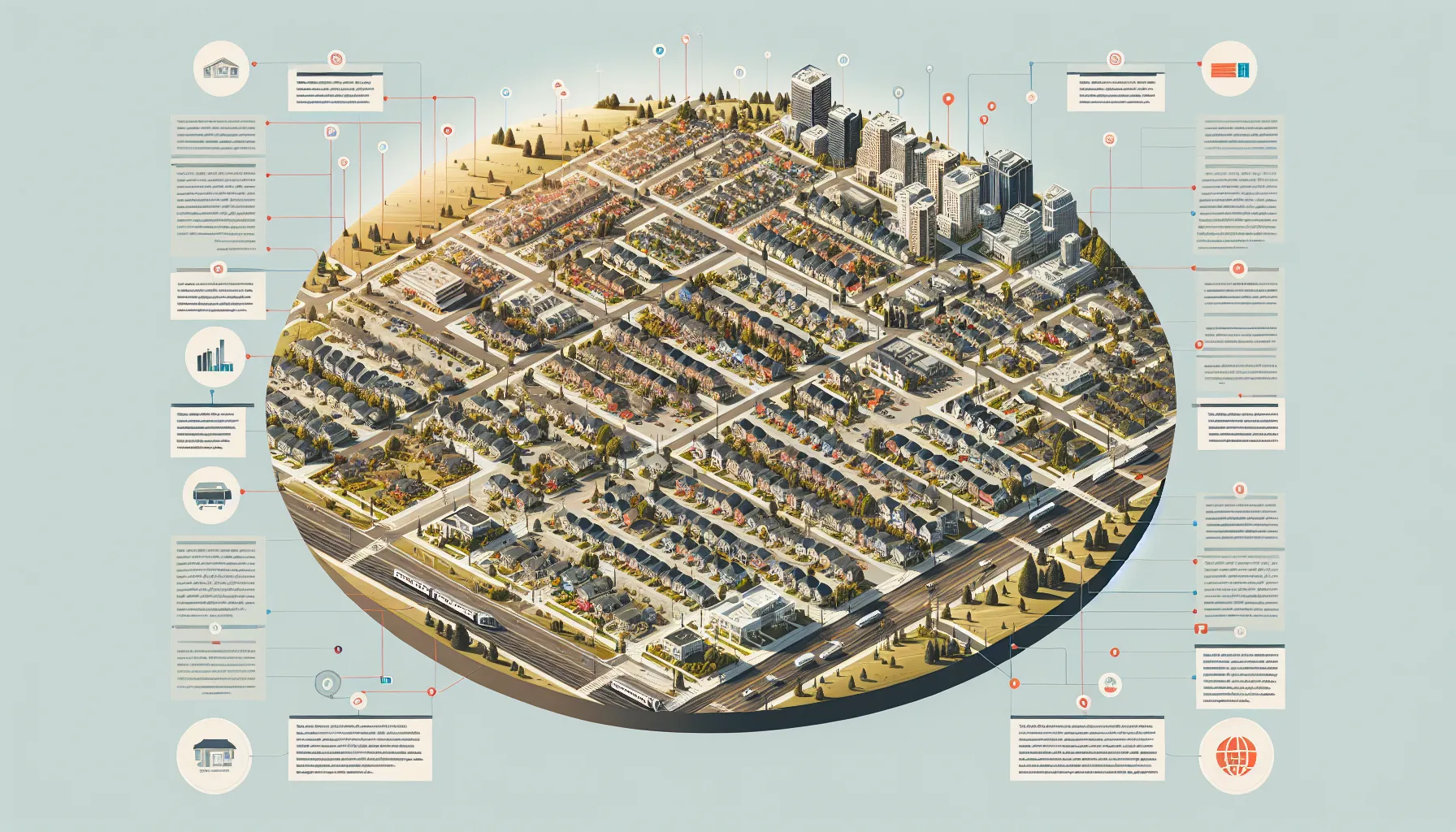Key Takeaways
- Fremont’s rental market is driven by strong demand due to its proximity to tech hubs, population growth, and access to quality schools and amenities.
- Rental rates vary by property type and location, with three-bedroom homes averaging $3,500-$4,200 per month and two-bedroom apartments ranging from $2,600-$3,200.
- Popular neighborhoods like Downtown Fremont, Ardenwood, and Warm Springs attract renters with unique benefits such as urban convenience, family-friendly environments, and proximity to employment centers.
- Factors like economic growth, housing demand, and access to schools and transportation significantly influence rental prices in Fremont.
- Property owners and investors can optimize returns by closely managing operational costs, positioning rentals competitively, and targeting high-demand areas.
- Fremont offers lucrative investment opportunities, with strong rental appreciation trends and a consistent demand for both single-family and multi-unit properties.
Fremont’s rental market offers a fascinating mix of opportunities and challenges. With its growing population and proximity to major employment hubs, it’s no surprise that demand for rental properties remains strong. But what does this mean for property owners and investors looking to make informed decisions?
Whether you’re a homeowner renting out a single property or an investor managing multiple units, understanding the local market dynamics is key. Are rental prices aligning with your expectations? Are maintenance and management costs eating into your returns? These are questions worth exploring to maximize your investment’s potential.
Let’s take a closer look at Fremont’s rental trends, uncovering insights that can help you stay ahead in a competitive market.
Overview Of Fremont Rental Market
Fremont stands out for its thriving rental market, driven by its proximity to major tech and business hubs. High demand for rental homes stems from its strategic location and the diverse opportunities it offers residents. This demand often results in competitive rental prices, presenting significant potential for property owners and investors.
Rental rates in Fremont vary widely, influenced by factors like property size, neighborhood, and amenities. For example, three-bedroom homes tend to command higher rents, while apartments in well-connected neighborhoods attract young professionals. Understanding these variations can help property owners position their rentals for maximum return.
The city’s consistent population growth adds further momentum to the rental market. Tenants here look for convenience, good schools, and access to transportation networks. Investors focusing on these aspects often experience higher occupancy rates. Are your properties meeting these tenant priorities?
An essential component of success in Fremont’s rental market lies in managing operational costs. These include maintenance, property management fees, and marketing expenses. For instance, monthly management fees typically range between 7% and 7.5% of rents, depending on the service package chosen. Monitoring these costs closely maintains profitability while keeping tenant satisfaction high.
Fremont’s housing demand and economic activity create a dynamic landscape. Whether you’re an individual homeowner or an investor managing multiple properties, understanding local trends and preferences is key. How are you leveraging Fremont’s growth to maximize your rental income?
Rental Price Trends In Fremont

Rental prices in Fremont reflect strong demand driven by population growth and proximity to employment hubs. Understanding historical patterns and current rates can help property owners and investors make informed decisions.
Historical Trends
Over the past decade, Fremont’s rental prices have seen consistent increases. Between 2015 and 2020, average rents for single-family homes rose by approximately 20%, while apartment rental rates grew by 15% during the same period. Higher rents often coincided with new job opportunities in nearby tech hubs, pushing demand for housing. Have you noticed how rental patterns shift with the local economy?
Current Market Rates
Currently, average rental rates in Fremont vary by property type and location. Three-bedroom homes typically rent for $3,500-$4,200 per month in neighborhoods with good schools and public transit access. Apartments with two bedrooms range from $2,600 to $3,200 monthly, depending on amenities like on-site gyms or secured parking. Do you find these rates align with what you’ve seen in your area?
Comparison With Neighboring Areas
Compared to nearby cities like Hayward and Concord, Fremont’s rental rates are higher. A three-bedroom home in Hayward might rent for $3,200, while Concord averages around $3,000 for similar properties. This premium reflects Fremont’s superior school system, safer neighborhoods, and access to Silicon Valley jobs. How do these factors influence your perspective on investment opportunities?
Factors Influencing Rental Prices

Rental prices in Fremont depend on several key factors. Understanding these elements can help property owners and renters alike make informed decisions.
Economic Growth And Employment
Fremont’s thriving economy and job market play a central role in shaping rental prices. As a hub for technology and manufacturing, the city attracts professionals from various industries. Proximity to Silicon Valley boosts demand further, especially for housing options near major employers. Have you considered how the strength of local industries impacts rental costs?
Demand And Supply Dynamics
The balance between housing demand and availability also drives rental rates. Fremont’s population growth has intensified competition for homes and apartments. Limited inventory, especially in desirable neighborhoods, often results in higher prices. Is the property you’re interested in located in a high-demand area? This could greatly influence its rent.
Infrastructure And Amenities
Infrastructure and local amenities significantly affect rental values. Access to quality schools, public transport, and recreational spaces makes neighborhoods more attractive. Homes near BART stations or within walking distance of parks and shopping centers typically command higher rents. How do the amenities around your property improve its appeal?
Popular Neighborhoods For Renters In Fremont

Fremont offers diverse neighborhoods, each with distinct advantages for renters. Choosing the right area depends on priorities such as proximity to work, schools, and amenities. Let’s explore some of Fremont’s rental hotspots.
Downtown Fremont
Downtown Fremont combines convenience and variety, making it attractive to renters. The area features a mix of modern apartments and cozy homes, catering to both families and professionals. It’s close to shopping centers, restaurants, and the Fremont BART station, simplifying commutes to nearby tech hubs.
Have you considered the benefits of living near transportation and dining options? Renters here often value convenience and urban accessibility. For those looking to balance work-life needs, Downtown Fremont can be an excellent choice.
Ardenwood
Ardenwood is known for its family-friendly atmosphere and well-regarded schools. It attracts renters seeking a quieter environment with easy freeway access for commuting. Parks and open spaces offer opportunities for outdoor recreation, creating a balanced living experience.
For families, Ardenwood stands out with its community-focused vibe. Are great schools and nearby recreational areas important to you? If so, this neighborhood aligns well with these priorities. It’s also ideal for professionals needing quick connections to the Peninsula.
Warm Springs
Warm Springs is appealing to renters who prioritize innovation and career growth. It’s located near high-tech companies and research facilities, attracting professionals in STEM fields. Rental options range from apartments to single-family homes, accommodating varied needs.
Do you prefer living close to work opportunities while enjoying a suburban feel? Warm Springs offers a mix of convenience and comfort. This quiet yet well-connected area supports both an active lifestyle and professional aspirations.
Each neighborhood in Fremont provides a distinct combination of features. What matters most to you—community, education, or convenience?
Challenges And Opportunities In Fremont Rentals

Fremont’s rental market presents both hurdles and avenues for growth, shaped by its popularity and economic vitality. Understanding these factors is essential for property owners and investors aiming to maximize returns.
Affordability Concerns
Fremont’s high rental costs can pose challenges for tenants and landlords alike. For tenants, securing housing in sought-after neighborhoods, such as Downtown Fremont or Ardenwood, often strains budgets. For landlords, maintaining balance between competitive pricing and profitability requires careful consideration.
Did you know three-bedroom homes typically rent for $3,500-$4,200 per month? This may limit the pool of potential tenants, especially for families. Similarly, smaller apartments may command rates of $2,600-$3,200, which could discourage those prioritizing affordability. Have you analyzed how rental pricing impacts tenant retention and rental income?
Rising operational expenses for landlords, including property management fees and routine maintenance, can further increase overall rental costs. Reviewing expenses like semiannual inspections ($75) or list marketing fees ($150) can help manage costs effectively.
Investment Opportunities
Fremont remains a highly attractive location for real estate investment. Its proximity to Silicon Valley and a strong economy drive demand for rental properties. Investors with portfolios of five to ten units often experience consistent returns due to Fremont’s vibrant housing market. Are you exploring prospects for long-term appreciation with high rental occupancy rates?
Targeting neighborhoods like Warm Springs, near tech hubs, offers access to premium rents and stable demand. The appeal of family-friendly environments in areas like Ardenwood makes these locations key spots for investment. Have you considered how neighborhood features influence ROI?
Rising rental trends, such as single-family homes appreciating nearly 20% from 2015 to 2020, suggest Fremont is a lucrative choice for property owners. By factoring in Fremont’s strong rental history and consistently growing demand, investors can achieve measurable results.
Conclusion
Fremont’s rental market offers a dynamic mix of opportunities for property owners and investors. As demand continues to grow, understanding the factors driving rental trends and neighborhood appeal is essential for maximizing returns. Whether you’re targeting family-friendly areas like Ardenwood or tech-focused hubs like Warm Springs, Fremont’s unique advantages make it a compelling market to explore. Balancing competitive pricing with tenant needs will be key to thriving in this evolving landscape.
Frequently Asked Questions
What drives the demand for rental properties in Fremont?
Fremont’s rental property demand is fueled by its strategic location, population growth, high-quality schools, and proximity to major job centers, including Silicon Valley. Tenants prioritize convenience, safety, and access to transportation, making Fremont a desirable place to live.
What are the average rental rates in Fremont?
Three-bedroom homes in Fremont typically rent for $3,500–$4,200 per month, while two-bedroom apartments range from $2,600–$3,200. Rental rates vary based on property size, amenities, and neighborhood.
Why are Fremont’s rental prices higher than neighboring cities?
Fremont has superior schools, safer neighborhoods, and better access to Silicon Valley jobs compared to nearby cities like Hayward and Concord. These attributes significantly increase rental demand and rates.
Which neighborhoods are popular for renters in Fremont?
Popular neighborhoods include Downtown Fremont for urban convenience, Ardenwood for family-friendly living and top schools, and Warm Springs for its proximity to tech companies and suburban comforts.
How have Fremont rental prices changed in recent years?
Fremont rental prices have steadily risen over the past decade. From 2015 to 2020, single-family home rents increased by about 20%, while apartment rents rose 15%. This upward trend reflects high demand and limited supply.
What amenities affect rental property values in Fremont?
Properties near quality schools, public transportation, and recreational spaces tend to command higher rents. Safety and neighborhood desirability also play a significant role in determining rental value.
What challenges do landlords face in Fremont’s rental market?
Landlords deal with rising operating costs, including property management fees and maintenance expenses. They must strike a balance between competitive pricing and maintaining profitability in a competitive market.
Is Fremont a good area for real estate investment?
Yes, Fremont is an attractive location for real estate investment due to its steady demand, population growth, and strong long-term appreciation potential. Neighborhoods like Warm Springs and Ardenwood are particularly promising.
Why is Ardenwood attractive for families?
Ardenwood is known for its quiet, family-friendly atmosphere and well-rated schools, making it an ideal neighborhood for families seeking a peaceful environment.
How does Fremont’s job market impact the rental demand?
Fremont’s thriving economy and proximity to Silicon Valley attract professionals, boosting demand for rental properties near major employers and creating a competitive rental market.
